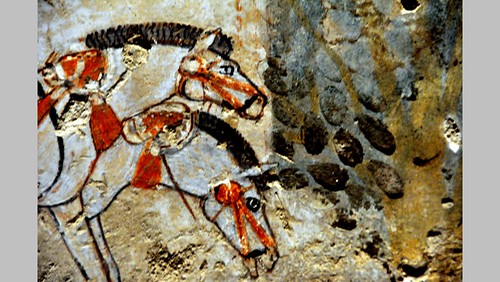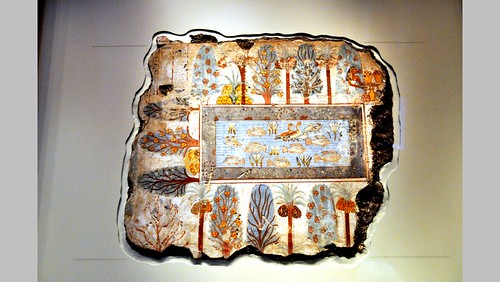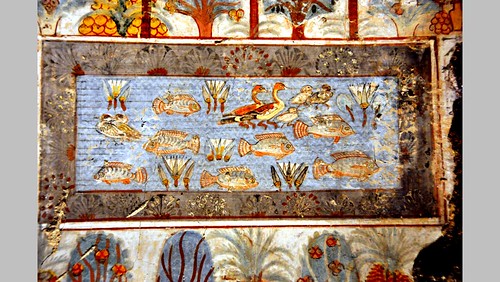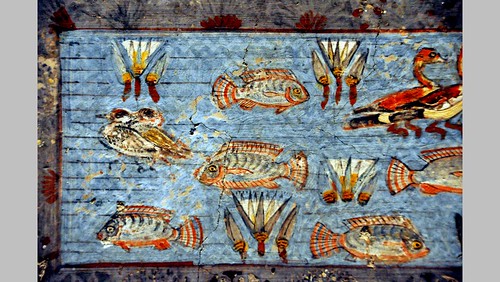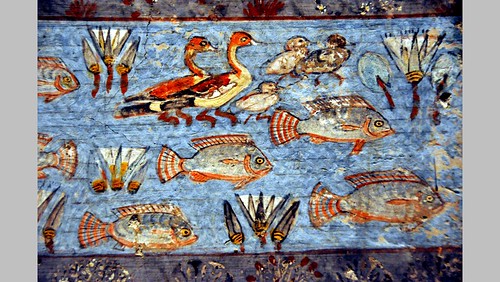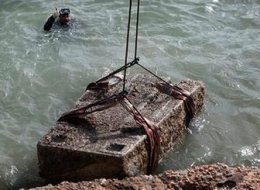

Cargado el 3 de julio, 2007
por Hans Ollermann
Nebamun
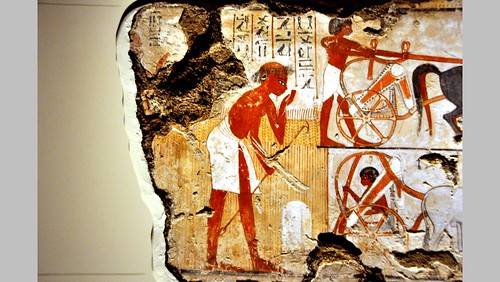
Image 83

Image 82
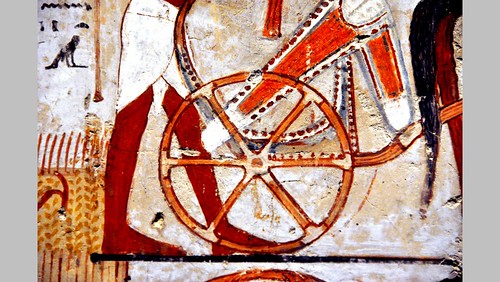
Image 81

Image 80

Image 79
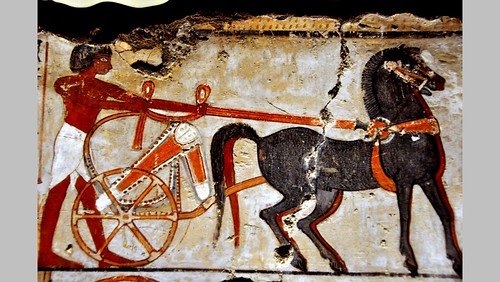
Image 78
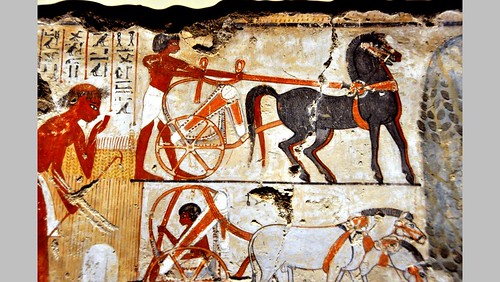
Image 77
Nebamun was an Egyptian "scribe and counter of grain" during the New Kingdom. His tomb in Thebes, the location of which is now lost, featured the famous Pond in a Garden false fresco painting.
Nebamun's name is translated as "My Lord is Amun" and he is thought to have lived c. 1500 bc. The paintings were hacked from the tomb wall and purchased by a British collector who in turn sold them to the British Museum in 1821. The collector died in poverty without ever revealing the source location of the paintings. The depictions are highly symbolic and thematically related to a joyful afterlife.
In 2009 the British Museum opened up a new gallery dedicated to the display of the restored eleven wall fragments from Nebamun's tomb, described as one of the Museum's greatest treasures. (Source: Wikipedia EncyclopediA)
See also my list of best and worst museums in the world:
www.flickr.com/photos/menesje/4059308291/
And here you find my list of best and worst museums in Holland:
www.flickr.com/photos/menesje/4059604700/
Hola AE´s,
Una pieza de un templo de Isis emerge de las aguas de Alejandría
Fecha : 17-12-2009
Fuente : EPA
http://www.google.com/hostednews/epa/article/ALeqM5hj3ulIv9qp9vizk0fQXZadPKSE2w
Autor : EFE
Saludos
Roberto Cerracin
La Nucia - ALICANTE

Alejandría (Egipto), 17 dic (EFE).- Parte de un pilón del templo ptolemaico de Isis fue extraído hoy de las aguas de la bahía de Alejandría, que han guardado durante siglos esta pieza, destinada a convertirse en la principal de un futuro museo submarino.
Aunque el tiempo no acompañaba y a las amenazas de lluvia se unió el viento y un cierto oleaje, nada impidió que se llevará a cabo la recuperación de la pieza de la época ptolemaica (325 a.C.-30 a.C.), que despertó una gran expectación entre los numerosos periodistas egipcios congregados y algunos curiosos.
Con la ayuda de una grúa y un buzo, el fragmento del pilón de granito rojo, con una altura de 2,25 metros y un peso de nueve toneladas, emergió del mar, frente a la fortaleza alejandrina de Qaitbey.
"Este es el inicio de la extracción de otras piezas del fondo del mar", aseguró el secretario general del Consejo Supremo de Antigüedades egipcias, Zahi Hawas, a los periodistas.
El fragmento recuperado hoy será, además, el objeto principal de un museo submarino proyectado en el puerto de Alejandría, explicó el arqueólogo egipcio, que no ofreció más detalles sobre esta iniciativa, que todavía está en fase de estudio.
Entretanto, el hallazgo, procedente del templo de Isis, diosa de la maternidad y del nacimiento en el Egipto Antiguo, será conservado en el anfiteatro romano de Alejandría.
El pilón al que pertenece la pieza fue descubierto hace siete años en el área submarina denominada "Zona Real", donde se encuentra también el palacio de Cleopatra, última gobernante de la dinastía ptolemaica, fundada en el año 305 a.C. por Ptolomeo I Sóter, general de Alejandro Magno.
La bahía de Alejandría esconde aún muchos secretos, ya que el geógrafo griego Estrabón documentó en el 450 a.C. la existencia de 35 ciudades en este área.
En ese sentido, el ministro de Cultura egipcio, Faruk Hosni, explicó que solo han recuperado "un dos por ciento de todo lo que hay sumergido", porque todavía quedan cientos de piezas bajo el agua.
Hosni, que destacó la importancia del descubrimiento de hoy, agregó que todavía continúan las investigaciones y que "el resto del templo de Isis también será sacado del mar".
Por su parte, Hawas adelantó que está prevista la extracción de una de las piezas del palacio de Cleopatra el próximo mes de mayo, sin especificar más.
Sobre el proceso de extracción de antigüedades submarinas, el jefe de la misión arqueológica griega que descubrió el pilón, Harry Tzales, señaló a Efe que se trata de una tarea delicada, porque al estar sumergidos se encuentran en un ambiente favorable para su conservación, algo que no ocurre en la superficie.
Tzales subrayó que el trozo de pilón recuperado hoy es "una pieza histórica que lleva más de 2.000 años bajo el agua, y ahora hay que protegerla".
Este nuevo descubrimiento "muestra la posición del templo de Isis y es una prueba de sincretismo y de la mezcla del estilo griego y faraónico", apuntó el arqueólogo.
"Los ptolomeos eran una dinastía griega que usaban la arquitectura faraónica", como demuestra la construcción de un pilón típico del arte de los faraones, afirmó Tzales, para quien hay que desterrar la idea de que "Alejandría era en su totalidad una ciudad griega".
##########################################
RSS Feed de Amigos de la Egiptología
http://www.egiptologia.com/index.php?format=feed&TYPE=rss
##########################################
Galería de Imágenes sobre el Antiguo Egipto
http://www.egiptologia.com/imagenes
Recomendamos: Instituto Valenciano de Egiptología
http://www.ivde.org/
--------------------------------------------------------------
LISTA DE DISTRIBUCIÓN DE AMIGOS DE LA EGIPTOLOGÍA - AE
Gestión Altas-Bajas y consulta mensajes enviados:
http://www.egiptologia.com/lista-de-distribucion.html
Moderador: Víctor Rivas egiptologia@egiptologia.com
Amigos de la Egiptología: http://www.egiptologia.com
Los mensajes de Amigos de la Egiptología son distribuidos gracias al apoyo y colaboración técnica de RedIRIS Red Académica Española - http://www.rediris.es

